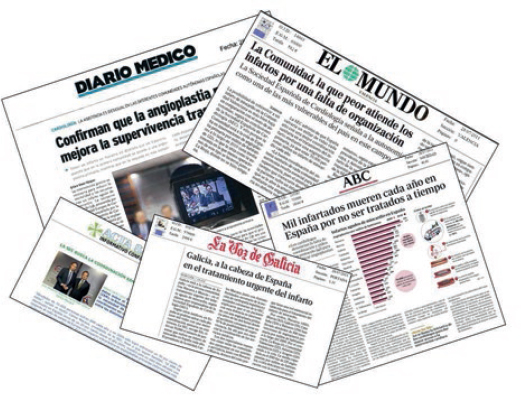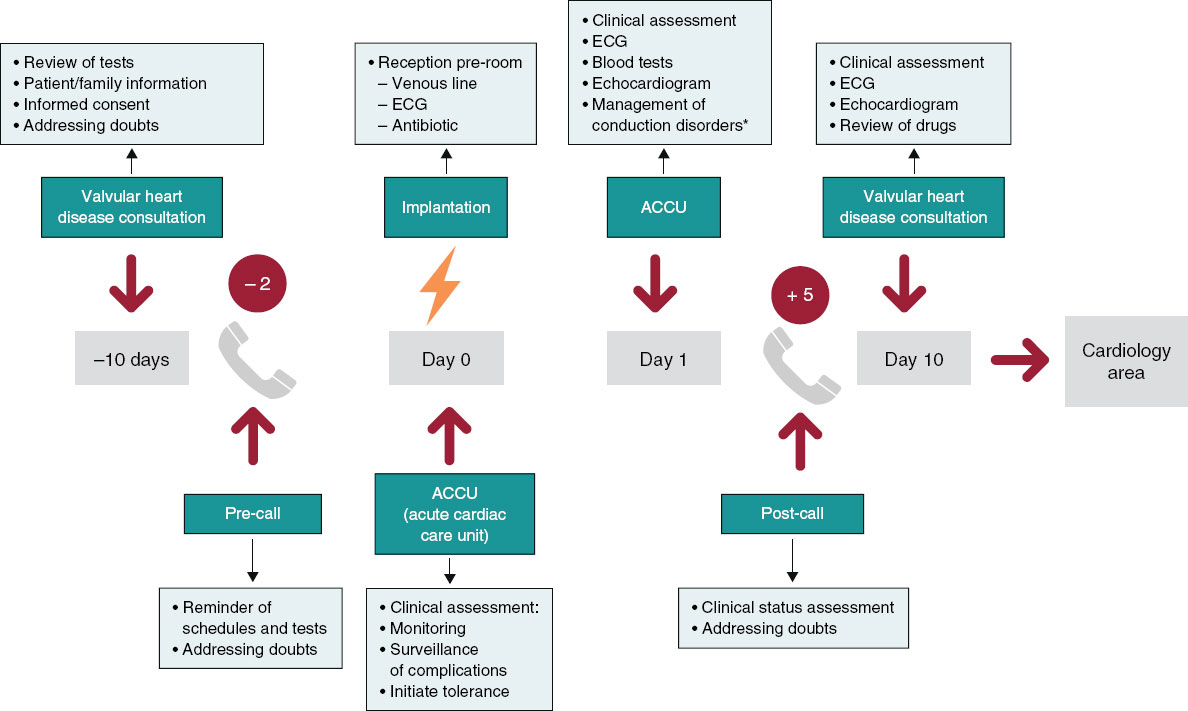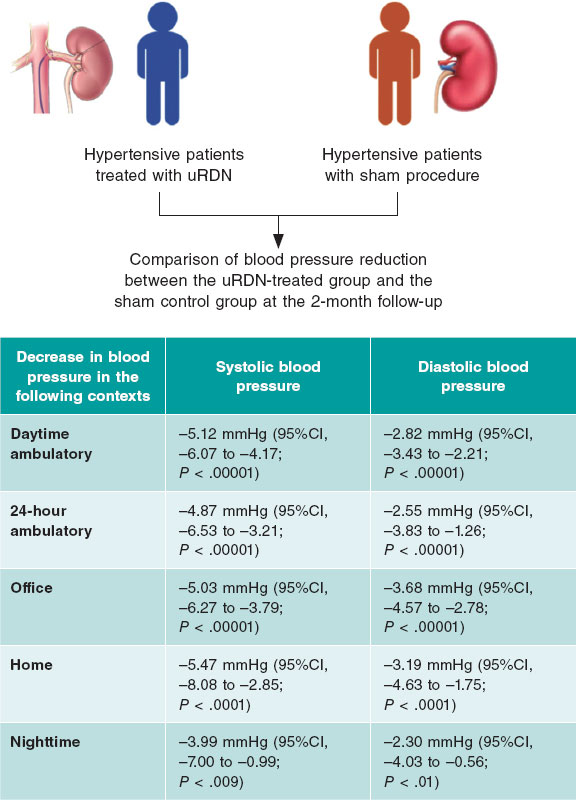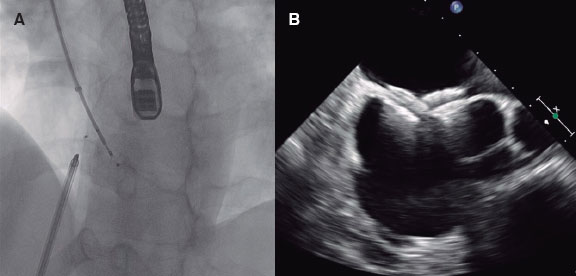Spain was inducted in the European initiative Stent for Life in a ceremony hosted by the General Assembly of the European Association of Percutaneous Cardiovascular Interventions (EAPCI) back in 2009. As president of the Hemodynamics and Interventional Cardiology Section of the Spanish Society of Cardiology (SEC), Dr. Fina Mauri signed the declaration of commitment with this initiative aimed to improve the access of patients to reperfusion by the increasing use of primary percutaneous coronary interventions (pPCI) as the optimal treatment in the management of ST-segment elevation myocardial infarction (STEMI).
The Stent for Life initiative was born the previous year (September 2008) as an alliance among the Spanish Society of Cardiology, EAPCI, and Eucomed.1 In Europe the situation of reperfusion in the management of infarction was under discussion. They came to the conclusion that there was a great heterogeneity among the different countries with an overall scarce penetration of pPCI as the treatment of choice.2 These differences were not related to gross domestic product (GDP): countries with relative low GDPs (Czech Republic, Hungary, Slovakia, Slovenia, Poland, Lithuania) performed many more pPCIs per million inhabitants compared to other countries with higher GDPs like Spain.2 For this reason, Spain was among the 6 countries asked to participate in this initiative together with Turkey, France, Greece, Bulgaria, and Serbia. All performed less than 200 pPCIs per million inhabitants (in 2008 only 165 PCIs per million inhabitants were performed in Spain). The objectives established at that time are shown on table 1; they were numerical objectives of implementation and penetration of this technique in the management of STEMI with the implicit creation of acute myocardial infarction networks.
Table 1. Objectives of the Stent for Life initiative from 2008
| Define regions/countries with unmet medical needs for the implementation of the optimal management of acute coronary syndrome |
|---|
| Implement an action program to increase the access of patients to pPCIs: a) Increase the percentage of pPCIs performed in > 70% of STEMI patients b) Achieve pPCI rates > 600 per million inhabitants/year c) Offer a 24/7 service in all necessary angioplasty centers for the full coverage of the region/country |
|
pPCI, primary percutaneous coronary intervention; STEMI, ST-segment elevation myocardial infarction. |
Back in 2008, there were only 4 well-structured infarction networks across in Spain: Murcia, Galicia, Balearic Islands, and the Chartered Community of Navarre performed between 200 and almost 400 pPCIs per million inhabitants. However, eventually only 12.8% of the entire Spanish population benefited from these 4 networks. In the remaining autonomous communities, the pPCIs were performed erratically with numbers lower or closer to 100 pPCIs per million inhabitants. Regions like the Community of Valencia, the Principality of Asturias, and Andalusia performed 61, 78, and 106 pPCIs per million inhabitants).3 Like Europe, these regional differences were not related to the GDP of the different Spanish autonomous communities. Therefore, the creation of a myocardial infarction network with full hospital infrastructure, trained professionals, and a system of medical emergencies in a developed country like ours became a purely organizational matter. In October 2010 and with the explicit support from the SEC and its affiliate sections Hemodynamics and Interventional Cardiology, Ischemic Heart Disease, and Coronary Units the different scientific societies of the autonomous communities signed the declaration of membership to the Stent for Life initiative (figure 1). From that moment on, the focus was on 3 different levels for the progressive and gradual implementation of infarction networks. In the first place, there was a political and media approach to the different health administrations involved. The publication of the comparative results from the different autonomous communities in the media (figure 2) contributed effectively to their involvement in this issue. Parallel to this and thanks to scientific publications and cardiology meetings, professionals became aware on the clinical need to implement these infarction networks.4-7 Finally, patients were approached through commercial campaigns and media announcements with positive short-term results.8 Everything was mostly funded with the unconditional support from the industry. After 10 years of many people working for the Stent for Life initiative it can be said that it has contributed to the implementation of infarction networks nationwide. In 2018, 21 261 pPCIs were performed (13 395 back in 2008) with an average rate of 416 pPCIs per million inhabitants. This rate is considered adequate given the prevalence of ischemic heart disease in our country without great differences among the different autonomous communities.9 At this point, what challenges will the next decade bring? The survey of a paper recently published by Rodriguez-Leor et al.10 in REC: Interventional Cardiology may have some of the answer to this question. The current objectives should focus on both the patient and the healthcare provider. At this point it is not about opening new centers or programs anymore, but about designing the procedures required for each center to keep quality outcomes. The satisfaction of well-trained professionals built on adequate retributions, regulating the rest periods, and the correct sizing of staff based on the healthcare needs are all key issues to take into consideration at the infarction centers. Similarly, generational replacement should occur while keeping the quality of the entire process. The Administration should consider payment to centers based on results and make sure that these payments reach the treating physician. On the other hand, very complex cases like STEMI patients complicated with cardiogenic shock should be referred to specialized centers capable of performing advanced ventricular assist techniques, heart surgery, and transplants. In this type of patients, mortality rate is still very high (around 50%). Therefore, each infarction network should be able to identify its shock centers for the adequate management of these patients.
Figure 1. A: induction ceremony of the scientific societies of the different autonomous communities into the Stent for Life initiative (Madrid, October 4, 2010); B: certificate of membership to the Stent for Life initiative of an affiliate society (Society of Cardiology of Castile and León).
Figure 2. Examples of news published by the media on comparative results among different autonomous communities on the management of ST-segment elevation myocardial infarction.
In conclusion, the objectives of the Stent for Life initiative in our country should look at the new clinical and professional challenges ahead with the patient as the protagonist of all clinical actions.
ACKNOWLEDGEMENTS
We wish to thank Dr. Matías Feldman, Dr. Ander Regueiro, Dr. José Ramón Rumoroso, and Dr. Miren Tellería for their dedication to the Stent for Life initiative in Spain over the last 10 years. We also wish to thank the members of the different boards of directors of the Hemodynamics and Interventional Cardiology Section of the SEC for their contribution to this paper.
CONFLICTS OF INTEREST
M. Sabaté was the national coordinator of the Stent for Life initiative in Spain between 2009 and 2013. No other conflicts of interest have been reported.
REFERENCES
1. Widimsky P, Wijns W, Kaifoszova Z. Stent for Life:how this initiative began? EuroIntervention. 2012;8 Suppl P:P8-10.
2. Widimsky P, Wijns W, Fajadet J, et al. Reperfusion therapy for ST elevation acute myocardial infarction in Europe:description of the current situation in 30 acountries. Eur Heart J. 2010;31:943-957.
3. Baz JA, Pinar E, Albarrán A, Mauri J;Spanish Society of Cardiology Working Group on Cardiac Catheterization and Interventional Cardiology. Spanish Cardiac Catheterization and Coronary Intervention Registry. 17th official report of the Spanish Society of Cardiology Working Group on Cardiac Catheterization and Interventional Cardiology (1990-2007). Rev Esp Cardiol. 2008;61:1298-1314.
4. Kristensen SD, Fajadet J, Di Mario C, et al. Implementation of primary angioplasty in Europe:Stent for Life initiative progress report. EuroIntervention. 2012;8:35-42.
5. Kristensen SD, Laut KG, Fajadet J, et al. Reperfusion therapy for ST elevation acute myocardial infarction 2010/2011:current status in 37 ESC countries. Eur Heart J. 2014;35:1957-1970.
6. Regueiro A, Bosch J, Martín-Yuste V, et al. Cost-effectiveness of a European ST-segment elevation myocardial infarction network:results from the Catalan Codi Infart network. BMJ Open. 2015;5:e009148.
7. Gómez-Hospital JA, Dallaglio PD, Sánchez-Salado JC, et al. Impact on delay times and characteristics of patients undergoing primary percutaneous coronary intervention in the southern metropolitan area of Barcelona after implementation of the infarction code program. Rev Esp Cardiol. 2012;65:911-918.
8. Regueiro A, Rosas A, Kaifoszova Z, et al. Impact of the “ACT NOW. SAVE A LIFE“public awareness campaign on the performance of a European STEMI network. Int J Cardiol. 2015;197:110-112.
9. Spanish Society of Cardiology Working Group on Cardiac Catheterization and Interventional Cardiology. Spanish Cardiac Catheterization and Coronary Intervention Registry. Available online: https://www.hemodinamica.com/cientifico/registro-de-actividad/. Accessed 3 Jul 2019.
10. Rodriguez-Leor O, Cid-Alvarez A, Moreno R, et al. Survey on the needs of primary angioplasty programs in Spain. REC Interv Cardiol. 2020;2:8-14.
Corresponding author: Sección de Cardiología Intervencionista, Instituto Cardiovascular, Hospital Clínic de Barcelona, Villarroel 170, 08036 Barcelona, Spain.
E-mail address: masabate@clinic.cat (M. Sabaté).












